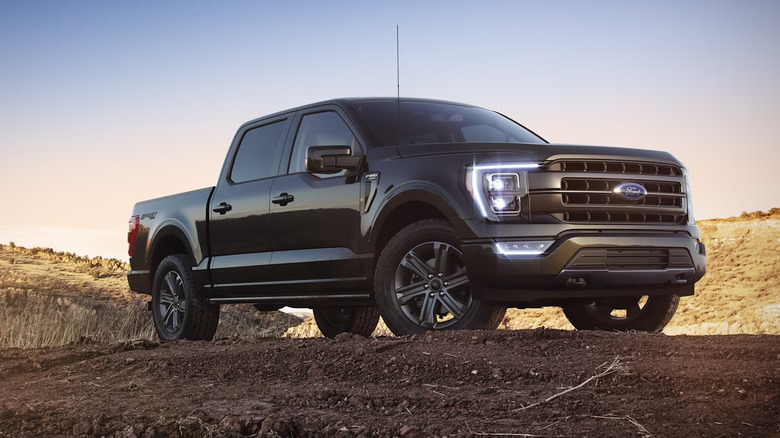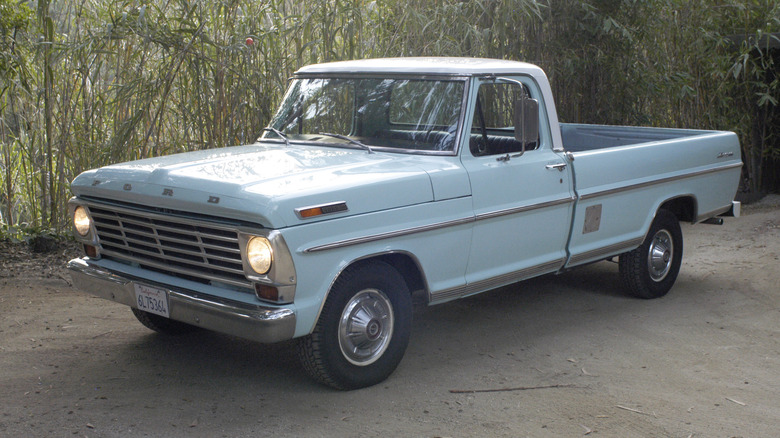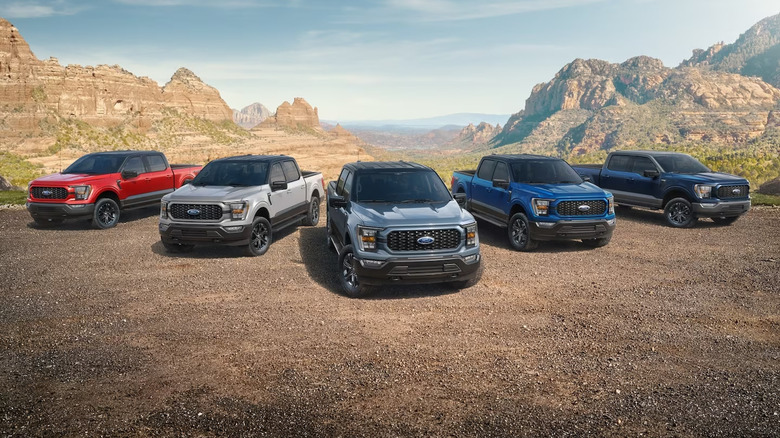What Does F-150 Mean, And How Is It Different From F-250?
The Ford F-150 isn't just the best-selling pickup truck in the United States; it's the best-selling vehicle, period. It has become something of an icon for American automobiles, and as long as people want to continue to drive pickup trucks, the chances of it falling out of favor anytime soon are slim to none. It is now a ubiquitous piece of American culture: When you say the word "truck," as often as not an F-150 pops into your head.
What doesn't pop into your head is the question "Why is it called that?" The F-150 is just the F-150, and we have all just accepted that for decades. The vast majority of people have never given a thought to the naming convention of the F-150, along with its sister trucks the F-250 and F-350. Why does Ford use those numbers to delineate between the different models of its signature line? Well, the answer happens to be a pretty straightforward one. However, before we get to that answer, we need to discuss the F-150's iconic predecessors.
The early F-Series
There are currently three variations of Ford's F-Series, but when the line started all the way back in the late 1940s, there were actually eight different models of the truck. The names for these eight different models were extremely simple. The lightest of the trucks was called the F-1 and the heaviest was the F-8, as the remaining six models filled in the gap between the two. These eight trucks were not all ordinary passenger pickup trucks. With the larger numbers, these were commercial trucks. If you were to go to a dealership and purchase an F-Series truck, it was going to be an F-1, 2, or 3.
In 1953, this single digit identifier was replaced, making the lowest weighted F-Series truck the F-100. However, the next two trucks were not called the F-200 and F-300. They were the F-250 and F-350, which are the model numbers we still know today. Why the discrepancy? Well, the F-100 was indeed a renaming, but the F-250 was not. Ford decided to combine the F-2 and F-3 for their three-quarter-ton payload pickup truck, and the halfway point between the two was the F-250. The F-350 was not a renaming of the F-3 but instead a renaming of the F-4. Having your line be F-100, F-250, and F-400 would be rather confusing, so it was called the F-350. That was the F-Series line for many years.
Introducing the F-150
The F-100 had been Ford's base pickup for 20 years before the F-150's 1975 debut. In response to new environmental regulations and the 1973 oil crisis, Ford, like every car company in America, had to meet new emissions standards. Ford needed a new pickup truck that could operate within these new restrictions. Although it was still a half-ton payload truck like the F-100, this new F-150 was a larger vehicle and therefore had more generous emission requirements than its predecessor.
By the time 1982 rolled around, the F-150 has started to greatly outsell the F-100. After all, this was a truck that had all of the benefits of the F-100 but was not burdened by any of the same restrictions. Ford then made the decision to retire the F-100 and make the F-150 the lightest pickup truck in the F-Series. The company also cleaned up the naming convention; every model now had a "50." The F-150 may not have as long a history as other F-Series trucks, but it's Ford's best-selling vehicle ever. The name change seems to have worked out for the best.


